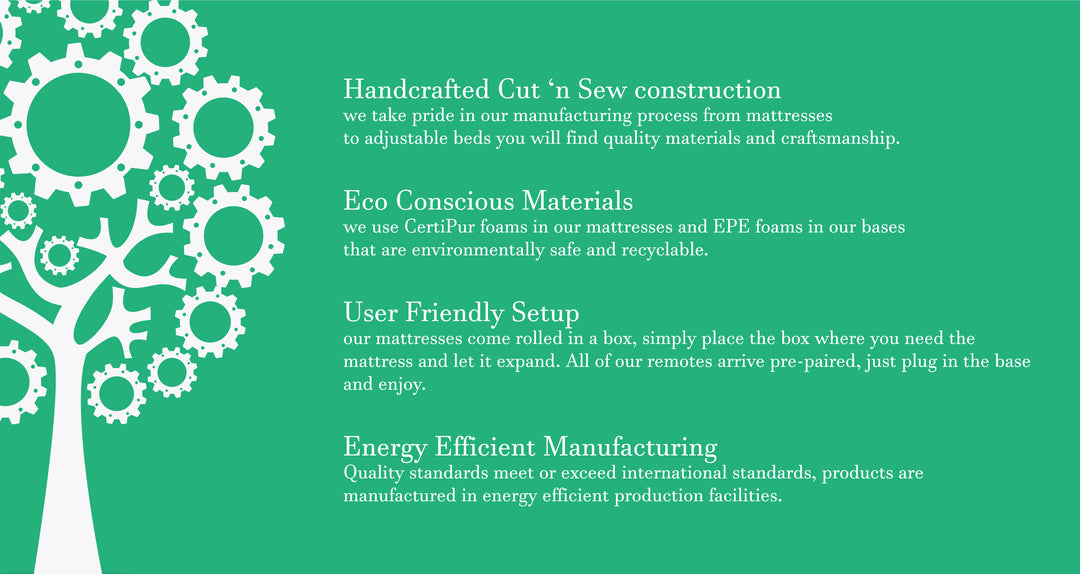- Temperature Reactive; the conformity of the mattress will slightly increase as body heat or room temperature increases.
- Less motion transfer than latex.
- You will lay IN IT (Latex: you will lay ON IT)
- Has a slower recovery response time than Latex
Memory Foam
Bamboo Charcoal Memory Foam
Black Diamond Bamboo Charcoal Visco Memory Foam has the lofty support of latex and maintains a temperature neutral environment. This technology is based on a specialized product developed after researching the 1,000-year-old practice of utilizing bamboo charcoal fibers for its unique properties. The Comfort Artisans at Sleep Science blended bamboo charcoal fibers into its proprietary visco memory foam to neutralize moisture in localized areas and dissipates odors.
Gel Infused Memory Foam
Gel-Infused Memory Foam has effective temperature neutralizing characteristics.
Air Comfort Foam
Air Foams are traditionally used in the comfort layers of a mattress; they provide breathability, airflow, and conformity. Air foams are composed of an enlarged cellular material that allows the flow of air between the top and bottom layers of the mattress to neutralize the temperature as it absorbs body heat.
Sleep Well ● Wake Rested ● Feel Energized
Copper Infused Memory Foam
Copper is an impressive chemical element on the periodic table. Traces of copper are found in the human body and are required to sustain life. By incorporating copper into our premium memory foam, we have created a sleep surface layer that regulates the mattress temperature and is antibacterial for a comfortable and stress- free sleep. The chemist at Sleep Science have emulsified copper and memory foam to give you a conforming and resilient sleep surface allowing the mattress to withstand heavy loads of pressure without losing its supportive properties and firm feel. The copper-infused memory foam naturally dissipates heat.
Latex
Even though they’re both latex, there are significant differences between Talalay latex and Dunlop latex. They’re manufactured using different processes; it takes 14 hours to make a Talalay latex mattress core and less than one hour to make a Dunlop mattress core.
- More motion transfer than memory foam.
- You will lay ON IT (Memory Foam: You will lay IN IT)
- Has an instant recovery response time
- Talalay latex rubber has a breathable design and cell structure that provides a temperature neutral environment. Memory foam is a dense material, which needs heat to activate its pressure relieving quality. It usually sleeps warmer.
All Natural Talalay Latex is a premium latex derived from natural resources that provide buoyant yet conforming support and temperature neutral benefits. In the Talalay, process air is extracted from the latex foam and the latex is flash frozen, resulting in an "airier" latex. If you like a softer mattress, buy one made with Talalay latex.
Dunlop is a type of latex and the name of the manufacturing process. Unlike the Talalay process, air is not extracted and there is no freezing stage. The latex cell structure is less "airy". If you prefer a firm mattress, this is the latex core for you.
Buoyancy ● Support ● Longevity
iFlip Collection
The iFlip Collection has a variety of technologies to choose from. Each mattress has a softer and firmer side just simply flip it.



